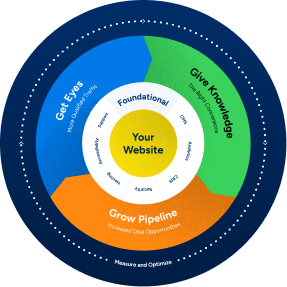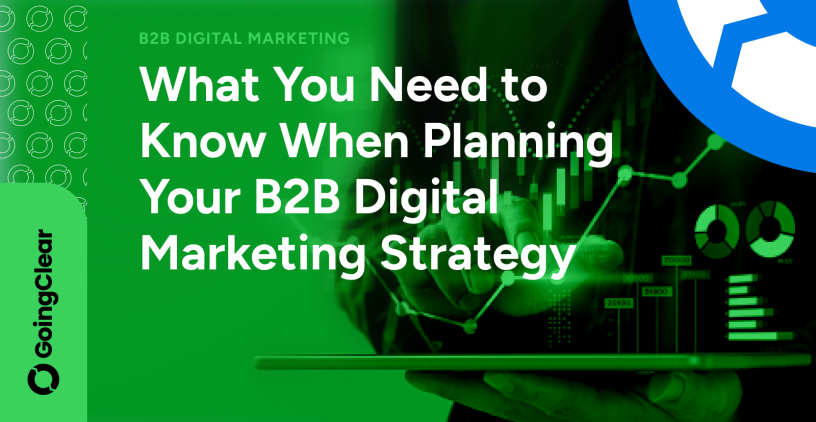What is B2B Marketing?
B2B marketing is the marketing of products or services to other businesses or organizations. B2B marketing can be used to market anything from raw materials to finished products, and can be done either directly between businesses, or indirectly through an intermediary such as a wholesaler or retailer.
There are many different aspects to consider when planning a B2B marketing strategy. Below are some of the most important factors to keep in mind:
-
Identify Your Target Market
The first step in any marketing strategy is to identify your target market. This is especially important in B2B marketing, as you will need to tailor your products or services to meet the specific needs of other businesses. When identifying your target market, consider factors such as size, industry, and location.
-
Know Your Competitors
In any market, it is important to know who your competition is. This will allow you to tailor your marketing strategy to better compete in the marketplace. When researching your competitors, be sure to consider their strengths and weaknesses, as well as their overall marketing strategy.
-
Developing a Unique Selling Proposition
Your unique selling proposition (USP) is what sets your business apart from your competitors. It is the reason why customers should do business with you instead of your competition. When developing your USP, be sure to focus on the benefits of your products or services, and how they meet the specific needs of your target market.
-
Create Engaging Content
Content is king when it comes to digital marketing. Your content should be engaging, informative, and relevant to your target audience. When creating content, be sure to consider various formats such as blog posts, infographics, videos, and whitepapers.
-
Implement an Inbound Marketing Strategy
An inbound marketing strategy is a great way to attract qualified leads to your website. Inbound marketing focuses on creating helpful content that draws customers in, rather than interruptive advertising that tries to sell them something. A well-executed inbound marketing strategy will help you to build trust and credibility with your target audience.
-
Using Data-Driven Marketing
Data-driven marketing is all about using data to make decisions about your marketing strategy. This includes things like tracking website visits, leads, and customers. By using data, you can better understand what is working and what isn’t, and make changes accordingly.
-
Measure Your Results
Last but not least, it is important to measure your results. This way, you can see whether or not your marketing strategy is successful. Be sure to track both leads and customers, as well as website traffic and engagement metrics. By regularly measuring your results, you can make the necessary changes to improve your overall marketing strategy.
Digital marketing is a critical part of any B2B marketing strategy. By following the tips above, you can ensure that your digital marketing efforts are successful.
B2B Marketing Strategies
When it comes to B2B marketing, there are a variety of strategies that can be used to reach your target market. The best strategy for your business will depend on factors such as your industry, budget, and the needs of your target market. Some common B2B marketing strategies include:
- Search Engine Optimization (SEO)
SEO is a process of optimizing your website to rank higher in search engine results. This can be done through things like keyword research, on-page optimization, and link building. SEO is an important part of any digital marketing strategy, as it can help you to reach more potential customers.
- Pay-Per-Click Advertising (PPC)
PPC is a type of online advertising where businesses pay to have their ads displayed in search engine results. When someone clicks on one of your ads, you will then pay the advertiser a fee. PPC can be an effective way to reach your target market, as you only pay when someone clicks on your ad.
- Social Media Marketing (SMM)
Social media marketing is the process of using social media platforms to promote your business. This can be done through things like creating engaging content, running ads, and building relationships with influencers. SMM is a great way to reach out to potential customers and create a connection with your target market.
- Email Marketing
Email marketing is the process of sending promotional emails to potential and existing customers. This can be done by building an email list and then creating engaging and relevant content. Email marketing can be an effective way to reach your target market, as it allows you to directly contact potential customers.
B2B Marketing Examples
We already have given some B2B marketing examples above, with matching detailed descriptions of each, but listed below are a few other B2B marketing examples.
- Search Engine Optimization (SEO)
- Pay-Per-Click Advertising (PPC)
- Social Media Marketing (SMM)
- Email Marketing
- Content Marketing
- Inbound Marketing
- Data-Driven Marketing
- Measurement and Reporting
Determine Your Brand Positioning
Your brand is the unique combination of attributes that make up your company. It’s what sets you apart from your competitors and defines how customers perceive you. Your brand positioning is the foundation for all of your marketing efforts, so it’s important to take the time to get it right.
Some things to consider when determining your brand positioning include:
- Your target market
- Your unique selling points
- Your brand personality
- Your competition
- Your business goals
Once you’ve considered all of these factors, you can start to develop a clear and concise brand positioning statement. This statement should be the foundation of all of your marketing efforts, so be sure to keep it in mind as you develop your strategy.
Identify Your Target Audience
The group of people you want to reach with your marketing efforts is your target audience. When choosing your target audience, think about things like demographics, hobbies, and requirements. You can start developing marketing campaigns that aim to appeal to your target audience once you’ve identified them.
Some things to consider when identifying your target audience include:
- Their demographics (age, gender, location, etc.)
- Their interests
- Their needs
- Their pain points
Run a Competitive Analysis
Before you start developing your marketing strategy, it’s important to understand your competition. Competitive analysis is a process of researching and analyzing your competitors to better understand their strengths and weaknesses. This information can help you to develop strategies that will give you a competitive advantage.
Some things to consider when conducting a competitive analysis include:
- Who are your major competitors?
- What are their strengths and weaknesses?
- What are their marketing strategies?
- How are they positioned in the market?
- What is their customer base like?
Explore Marketing Channels to Use
There are a variety of marketing channels that you can use to reach your target audience. The best channel for you will depend on your budget, your business goals, and your target audience. Some popular marketing channels include:
- Search engine optimization (SEO)
- Pay-per-click advertising (PPC)
- Social media marketing (SMM)
- Email marketing
- Content marketing
Request a FREE Business Consultation!
GoingClear is a world-class in-house team of designers, developers, marketers, and strategists located in Boston, MA. They are experts when it comes to all things SEO and how to grow your website and online business, so give them a call today for a free consultation!

